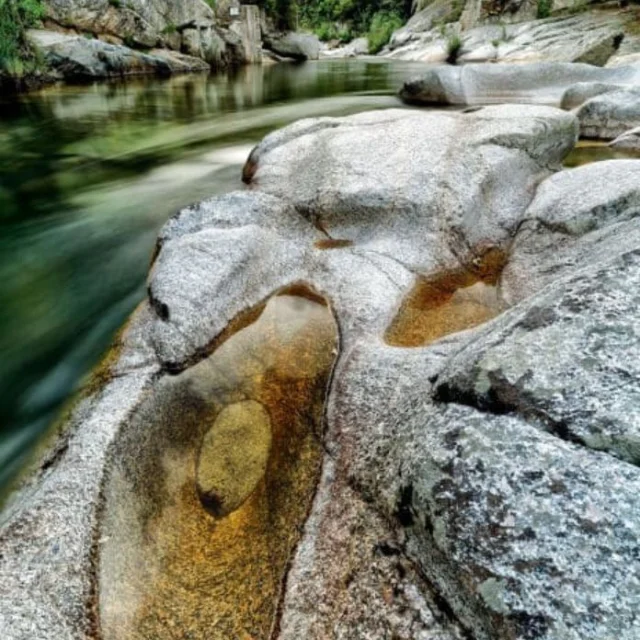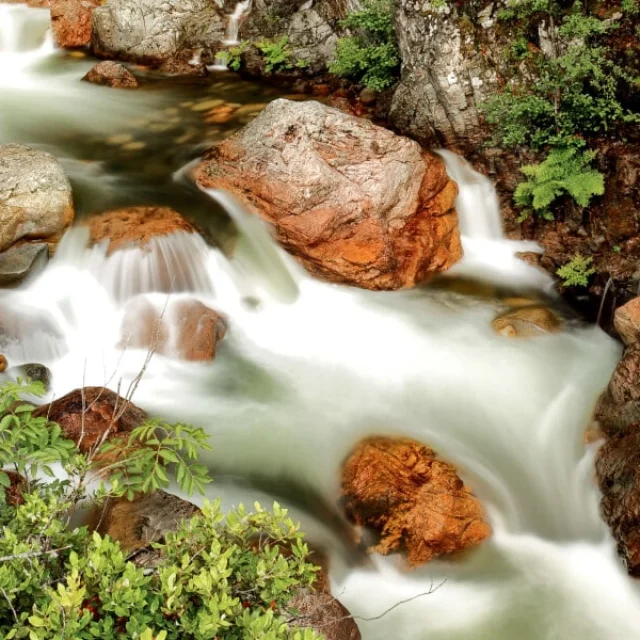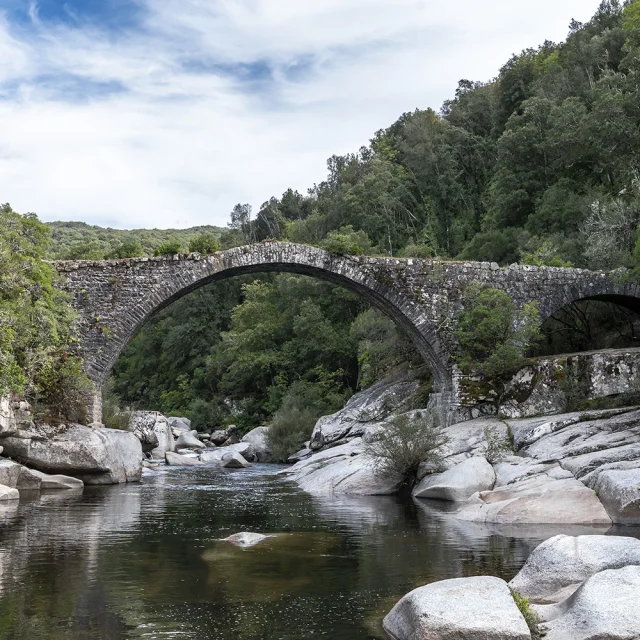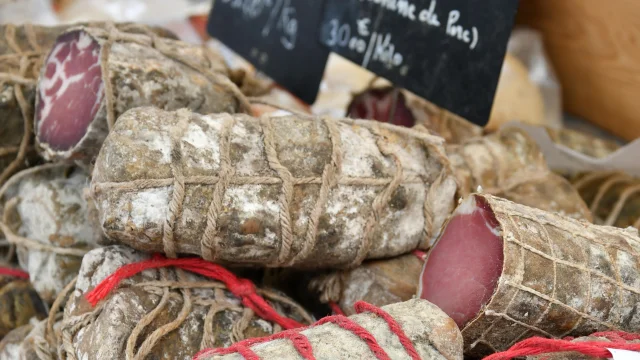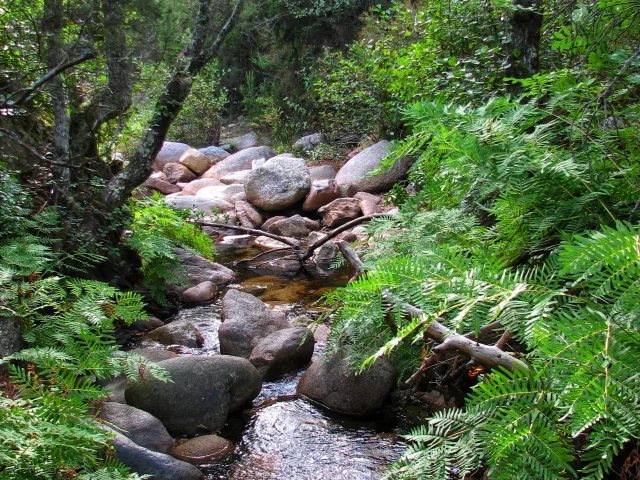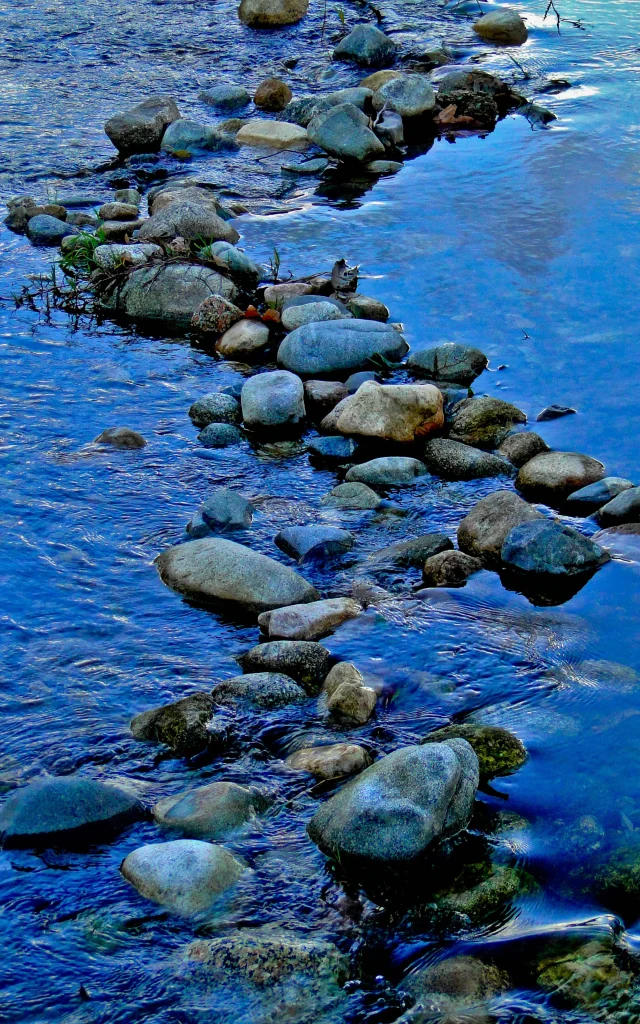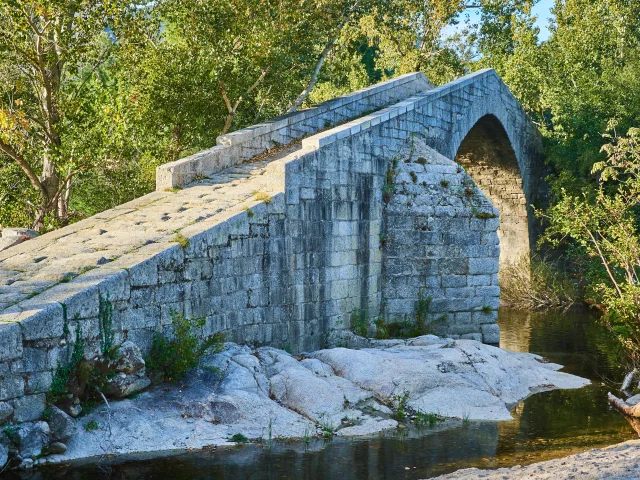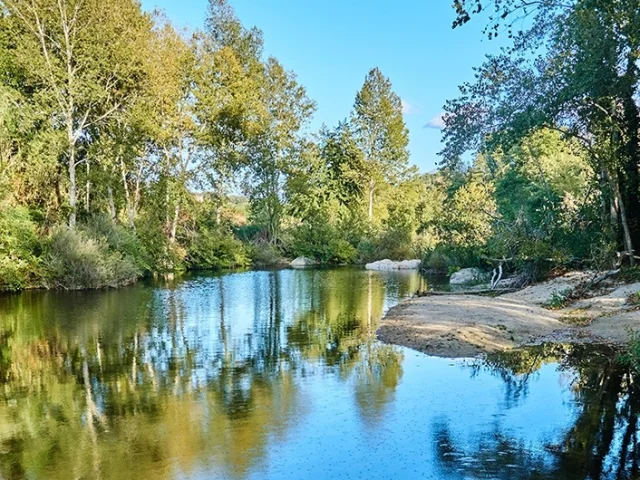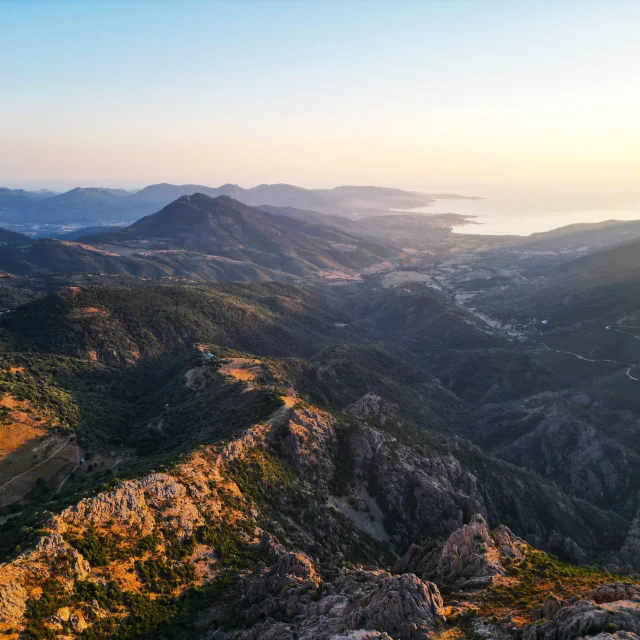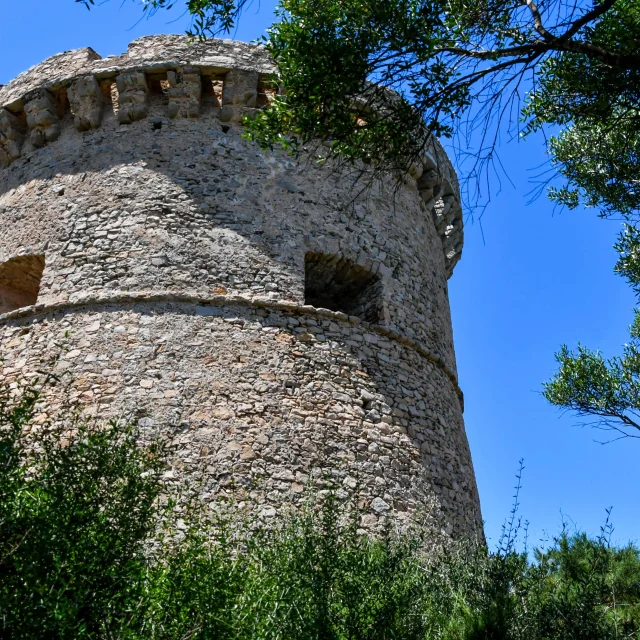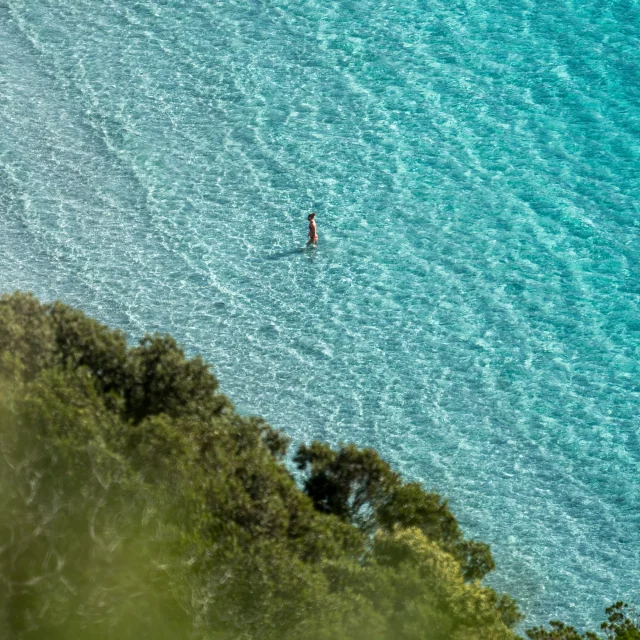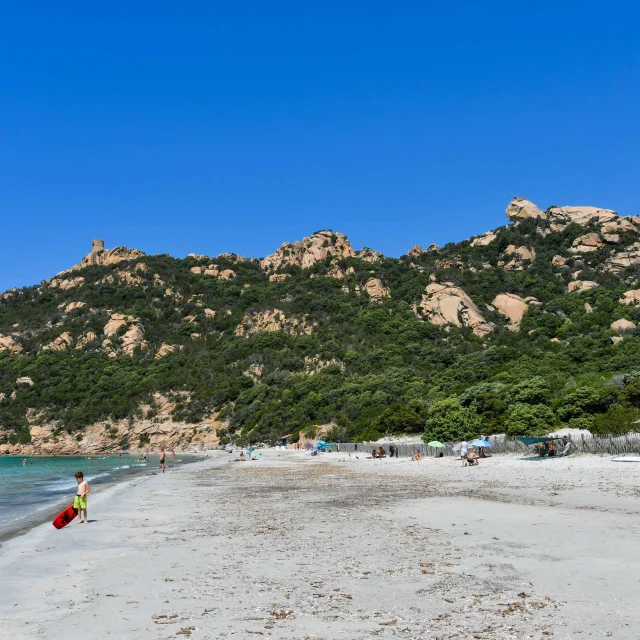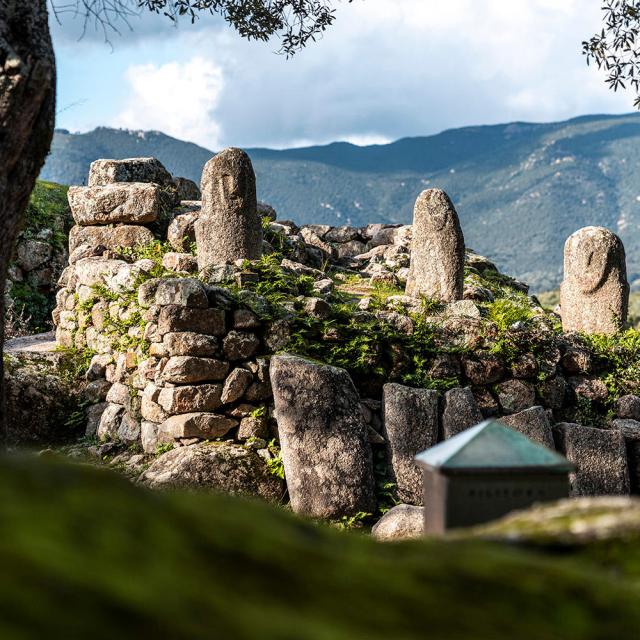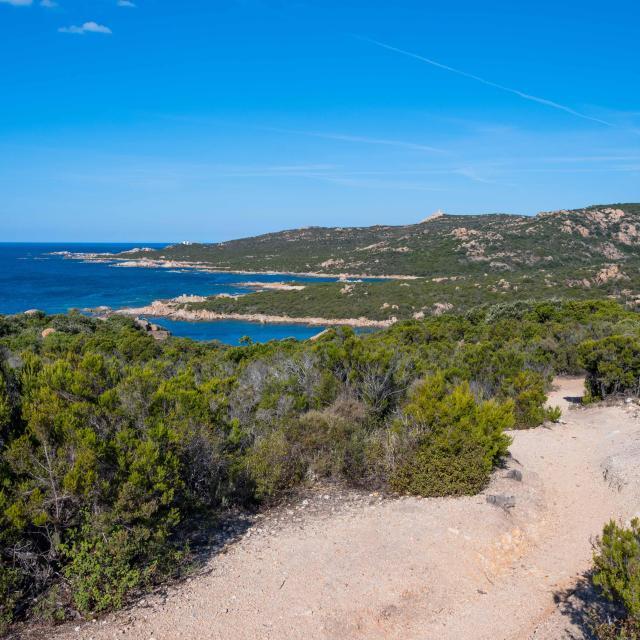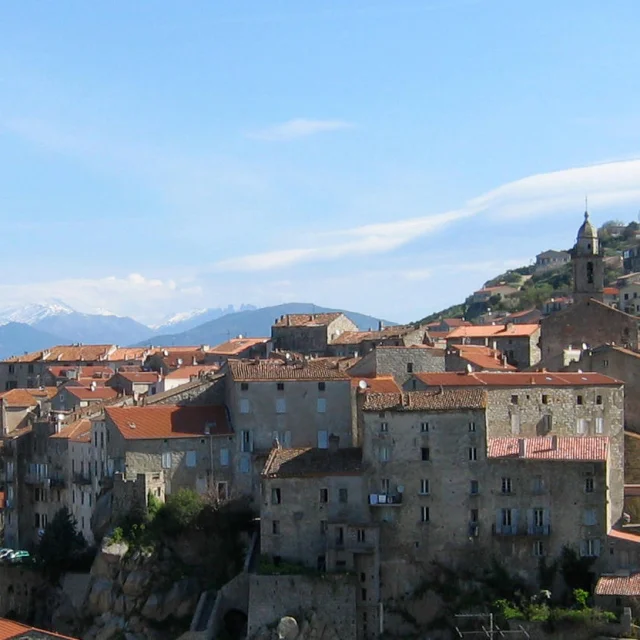The Taravu flows through a mosaic of natural woodland and scrubland and extensive agricultural areas. Most of the river’s course is dominated by woodland and scrub, the variability of which reflects the natural gradation of vegetation, from the sub-alpine to the thermo-Mediterranean levels. Only the alluvial plain, which forms the most downstream part, is largely occupied by grazed meadows. A few plots of vines and rare areas of gardens and/or housing complete this mosaic, although they do not occupy a large area. The overall landscape is relatively homogenous, regularly interspersed with erosion-resistant granite layers that form rocky spurs on the hillsides and gorges along the river. These different environmental contexts define contrasting sections in terms of both physical characteristics (hydrodynamics, sediment regime, etc.) and biological characteristics (nature of the riparian vegetation, ecological potential, etc.).
The whole of the Taravu (except for the mouth area) is favourable to the development of trout: as such, the Taravu has the characteristics of a 1st category fish river. It should also be noted that several sections of the Taravu’s tributaries are strictly off-limits to fishing, with a view to protecting the macrostigma trout, which is emblematic of Corsica.
The Taravu watershed incorporates or intersects various areas marked by a wide diversity of natural spaces with high environmental value, namely six * ZNIEFF type I, five * ZNIEFF II and five Natura 2000 sites.( * Natural areas of ecological, faunistic and floristic interest).
The Parc Naturel de Corse covers around 20,500 hectares (around 6% of the total surface area of the PNRC) and covers 11 communes in the Haut and Moyen Taravu. A large number of plant and animal species thrive in the catchment area. These include plants, trees and shrubs, birds, reptiles, amphibians, insects and mammals. Many of the species are endemic, rare, protected and often all three at the same time!
Furthermore, since 2017, the Taravu river has been awarded the “Wild River Sites” label, awarded by a scientific committee, attesting to the valley’s preserved and balanced character.


